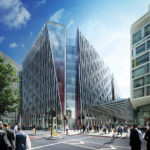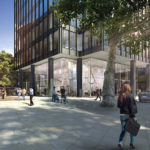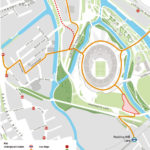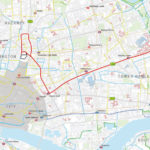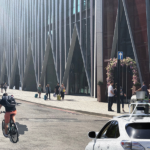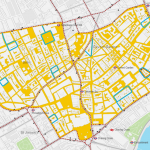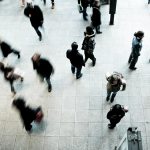As we continue to look to solve the challenges facing our complex and urban cities, in this instalment of ‘A Conversation with’, we sit down with Derek Griffiths, our Head of Engineering. From the role engineering plays in helping create better cities and environments to construction and logistics, Derek shares his insights and thoughts on the multi-faceted industry.
So Derek, for less technical savvy, tell us, what role does Engineering play here at Momentum?
I’m pleased to say that engineering is embedded in every one of our projects. The earlier we are involved, the better, as this gives us the best chance to get key principles right first time. This means lots of sketching and mark-ups, working with architects and others in workshops, and giving advice to our clients.
As projects develop, you will see our engineers immersing themselves into the finer details, which may include designing roads, junctions and public realm, cycle and public transport infrastructure…the list goes on. I may be biased, but engineering is in pretty much everything you can see (pavements, signs, traffic lights, landscaping) and everything you can’t (drainage, sewers, utilities). Not always glamorous but certainly significant.
Finally, we do a great deal of work to help minimise the disruption caused during construction, for example by designing spaces for lorries to unload safely. When it comes to being on-site, we often support our clients by supervising the building of a scheme to ensure safety and to provide clients with the peace of mind the work meets their requirements; and for any unwanted surprises, reassurance such issues will be resolved.
Through the lenses of an engineer, can you tell us how engineering has helped transform the spaces and environments we live and work in?
I love spaces which blur the lines of control between different users. For a long time, highway design meant separating motorised traffic from people, pedestrians from cyclists, and a successful street was one that had free flowing traffic. Now, we are recognising and designing streets to become destinations and places to live as well as corridors to move.
Can you give us an insight into some of the challenges you face as engineers in today’s society?
Making people look up from their mobiles before they cross the road?!
Twenty years ago the transport debate was about sustainable transport; from reinvesting in railways and public transport to charging schemes aiming to get people out of their cars. Fast forward to today, the cycle revolution is here in London, the autonomous car is coming and the gig economy is changing how people work. With these exciting developments come challenges, most of which revolve around the cost of modernising existing infrastructure to accommodate these changes. Engineering projects aren’t cheap and they use a lot of natural resources, so the real challenge is to imagine and predict what the future will look like and ensure what we design today is not just right for now but for the future too.
As we aspire to create healthier streets, cleaner environments and spaces for people, what would you say plays the biggest role in helping us achieve that?
People will get out of their car and take the train instead, if they are confident it will arrive on time; they will get on a bike, so long as they believe it is safe; and people will live, eat and play outdoors in our cities, if the spaces we create are vibrant and the air is clean.
It all starts with design doesn’t it? Through our work in planning and engineering, and the successful projects delivered for our clients, we at Momentum are in a prime position to enable change through good design which gets people thinking about sustainable and healthy transport choices.
To close, how do you envisage people interacting with our future cities?
Technology will continue to change how we live and work, but it won’t change the fact that we are social beings and that we will therefore always want to come together to interact, share experiences and continue to be in awe of how design, when combined with nature, space, and material can reshape environments and create communities.
Our challenge is to design the spaces and the infrastructure to ensure that can happen.
